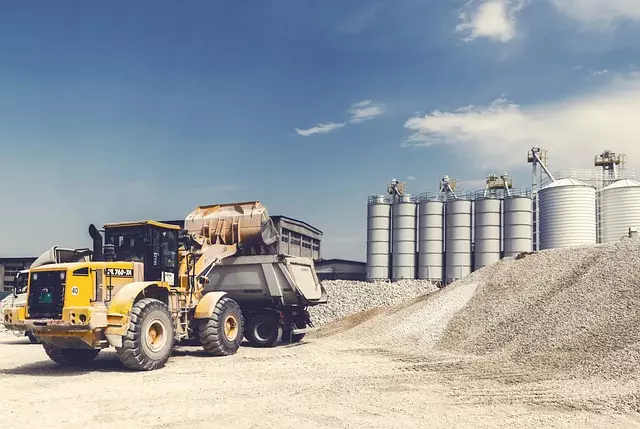Administrative controls are vital for ensuring worker safety in industries, involving a systematic process of hazard recognition, assessment, and exposure monitoring. By identifying risks like chemical exposures or ergonomic issues through detailed analyses, organizations can implement tailored controls. Exposure monitoring uses tools like air sampling to quantify hazards, guiding risk mitigation strategies. This comprehensive approach combines engineering, administrative, and PPE solutions, ensuring continuous improvement in industrial hygiene standards. Case studies show successful implementations across industries, fostering safety cultures and reducing workplace risks through rigorous hazard evaluations and strategic planning. Training and communication are essential for promoting a proactive safety mindset among employees.
Administrative controls are a cornerstone of industrial hygiene, playing a vital role in identifying, mitigating, and preventing workplace hazards. This comprehensive guide delves into the essential elements of effective administrative controls, from understanding their foundational principles to practical strategies for implementation. We explore key areas like hazard recognition and assessment, exposure monitoring techniques, and successful case studies. By mastering these techniques, organizations can enhance worker safety and ensure compliance with industrial hygiene standards.
- Understanding Administrative Controls: A Foundation for Industrial Hygiene
- Hazard Recognition and Assessment: Identifying Potential Risks in the Workplace
- Exposure Monitoring Techniques: Measuring and Evaluating Worker Exposure
- Implementing Effective Administrative Controls: Strategies and Best Practices
- Case Studies: Successful Administrative Control Measures in Action
- The Role of Training and Communication in Strengthening Administrative Controls
Understanding Administrative Controls: A Foundation for Industrial Hygiene
Administrative controls are a cornerstone in the field of industrial hygiene, offering strategies to prevent or minimize employee exposure to hazards in the workplace. By implementing these controls, organizations can create a safer and healthier environment for their workers. Understanding administrative controls is vital for identifying potential risks and managing them effectively. It involves a systematic approach to hazard recognition and assessment, where potential dangers are identified, evaluated, and prioritized.
Once hazards are recognized, exposure monitoring becomes crucial. This process measures the levels of hazardous substances or conditions present in the work environment over time. Through regular monitoring, employers can determine whether controls are effective and make adjustments as necessary. By combining these practices, organizations can ensure compliance with safety regulations and foster a culture of industrial hygiene excellence.
Hazard Recognition and Assessment: Identifying Potential Risks in the Workplace
Hazard Recognition and Assessment plays a pivotal role in establishing robust administrative controls within any workplace environment. The initial step involves meticulous identification and categorization of potential risks that could impact workers’ health and safety, aligning closely with industrial hygiene practices. By employing comprehensive hazard assessment methods, organizations can uncover various dangers lurking in the industrial setting—from chemical exposure to ergonomically challenging tasks.
This process necessitates a systematic examination of work operations, involving detailed analysis of production processes, materials utilized, and worker activities. Effective hazard recognition involves engaging multiple stakeholders, including employees, health and safety professionals, and seasoned industry experts. Through collaborative efforts, these stakeholders can uncover hidden risks, ensuring no aspect of potential exposure is overlooked. Subsequently, this knowledge serves as the foundation for implementing tailored administrative controls and exposure monitoring strategies to mitigate identified hazards effectively.
Exposure Monitoring Techniques: Measuring and Evaluating Worker Exposure
In the realm of industrial hygiene, effective hazard recognition and assessment are paramount to ensuring worker safety. Exposure monitoring techniques play a crucial role in this process by quantifying and qualifying the level of exposure workers have to various hazards within their work environment. These methods involve advanced tools and protocols designed to measure and evaluate worker exposure accurately. By employing scientific principles and technology, such as air sampling devices and personal protective equipment (PPE), organizations can gather data that reveals the presence and concentration of hazardous substances in the air or on surfaces.
This data is then analyzed to determine if exposure levels exceed established safety thresholds. Exposure monitoring helps identify at-risk areas within a facility and guides the implementation of appropriate control measures, such as ventilation systems or engineering controls, to mitigate potential health risks. Regular monitoring also enables employers to comply with regulatory requirements, track changes in exposure over time, and make informed decisions regarding personal protective equipment (PPE) usage and workplace practices, ultimately fostering a safer work environment through data-driven strategies.
Implementing Effective Administrative Controls: Strategies and Best Practices
Implementing effective administrative controls is a multifaceted strategy that forms the backbone of any robust industrial hygiene program. It involves a systematic approach to identifying, evaluating, and mitigating potential hazards within the workplace. The first step in this process is recognizing and assessing these hazards through thorough inspections and detailed risk assessments. This involves meticulously examining every aspect of the work environment and processes to pinpoint areas where workers might be at risk of exposure to hazardous substances or conditions.
Once hazards are identified and assessed, the next crucial stage is implementation of appropriate controls. Best practices dictate a combination of engineering controls (e.g., automated systems, ventilation), administrative measures (e.g., work practices, training), and personal protective equipment (PPE). Regular exposure monitoring plays a vital role in ensuring these controls are effective. By continuously assessing worker exposure levels, companies can adjust their strategies as needed, upholding a commitment to maintaining safe and healthy workplaces that prioritizes industrial hygiene standards.
Case Studies: Successful Administrative Control Measures in Action
Successful administrative control measures have been implemented across various industries, demonstrating their effectiveness in enhancing industrial hygiene and mitigating workplace hazards. Case studies reveal that identifying and assessing risks through thorough hazard recognition and assessment is a pivotal first step. By meticulously evaluating potential dangers, organizations can devise strategic plans to minimize or eliminate employee exposure.
One notable example involves manufacturing plants where exposure monitoring has significantly reduced hazardous chemical levels. Through regular sampling and analysis, companies have successfully implemented engineering controls and personal protective equipment (PPE) to safeguard workers’ health. These measures have not only improved air quality but also fostered a culture of safety awareness, empowering employees to actively participate in maintaining a healthy work environment.
The Role of Training and Communication in Strengthening Administrative Controls
Training and effective communication are pivotal in strengthening administrative controls within any industrial setting. By equipping employees with comprehensive knowledge on industrial hygiene and hazard recognition, organizations can foster a culture of safety awareness. Regular training sessions should cover topics such as identifying potential risks, understanding exposure monitoring methods, and implementing best practices for minimizing hazards. This empowers workers to actively participate in maintaining a safe work environment.
Moreover, open communication channels ensure that concerns and observations related to administrative controls are promptly addressed. Encouraging feedback from all levels of the hierarchy helps identify gaps and areas for improvement. Regular meetings, clear protocol documentation, and accessible information resources facilitate continuous learning, ensuring everyone remains updated on safety protocols, especially regarding hazard assessment and exposure mitigation strategies.


